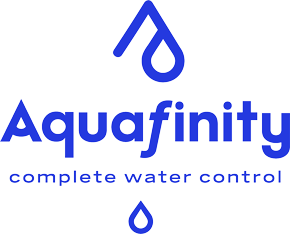
Over the years, there have been quite a few changes in the way pools are operated. As the world gets more complex, some long-standing must-dos seem to have fallen by the wayside. This is not only true for pool facilites, large and small, but for pool support companies as well. One in particular appears to be the lost art of water balance, which is extremely important.
Water balance, also known by the Langelier Saturation Index (or LSI) is defined as an approximate indicator of the degree of saturation of calcium carbonate in the water. Simply put, it is the unbiased indicator of whether your pool or spa water is either under-saturated, or “hungry”,…or oversaturated or “overstuffed,” and looking to shed some of its excess baggage. As you probably know, there is a handful of variables that affect water balance. In order of importance, they are pH, temperature, total alkalinity, calcium hardness, and total dissolved solids, or TDS. Notice that chlorine is nowhere to be found, yet that is the variable that folks focus on, seemingly ignoring some pretty important players. Some of these variables, like pH, have legal limits and other variables have practical or logistical limitations (like TDS or temperature).
Hungry water, which by the way, looks exactly the same as overstuffed water to the naked eye, reacts completely differently. Hungry water, even with perfect chlorine and pH levels can aggressively dissolve copper in heaters, erode grout in pool tile, make potholes in pool finishes, and trash any metallic component within your pool system. When we say attack, we mean that it will in effect erode these components, causing premature deterioration.

Water balance, also known by the Langelier Saturation Index (or LSI) is defined as an approximate indicator of the degree of saturation of calcium carbonate in the water. Simply put, it is the unbiased indicator of whether your pool or spa water is either under-saturated, or “hungry”,…or oversaturated or “overstuffed,” and looking to shed some of its excess baggage. As you probably know, there is a handful of variables that affect water balance. In order of importance, they are pH, temperature, total alkalinity, calcium hardness, and total dissolved solids, or TDS. Notice that chlorine is nowhere to be found, yet that is the variable that folks focus on, seemingly ignoring some pretty important players. Some of these variables, like pH, have legal limits and other variables have practical or logistical limitations (like TDS or temperature).
Hungry water, which by the way, looks exactly the same as overstuffed water to the naked eye, reacts completely differently. Hungry water, even with perfect chlorine and pH levels can aggressively dissolve copper in heaters, erode grout in pool tile, make potholes in pool finishes, and trash any metallic component within your pool system. When we say attack, we mean that it will in effect erode these components, causing premature deterioration.
We remember years ago that most operators would take daily or weekly calcium and alkalinity readings, and make minor adjustments to their water chemistry to keep the water, perfectly balanced, and neither hungry or overstuffed. Not so in many pools today.
What can an operator do to keep his pool water in balance and prevent premature destruction of pool components? Here are a few quick points:.
- The first step would be to test water for all the parameters, and not just chlorine and pH. This will let you know where you stand. While a Taylor K2006 test kit will work great, our techs carry a Palintest tester or the Spin Touch digital tester that tests 11 parameters in 60-seconds… sounds a lot more like 2023, doesn’t it?
- The next step is to calculate what it will take to balance your pool water. While you can use a manual calculator, or the CES slide rule calculator, we use the NextGeneration smartphone app that you can find at http://onelink.to/qz369v. You simply add your existing parameters and it will quickly let you know if your water is hungry (negative LSI) or overstuffed (too positive). A range of -0.2 to +0.2 is considered neutral.
- The next step is to purchase, measure, and add-dissolved the correct amount of sodium bicarbonate and calcium chloride to bring the water to proper balance, or to adjust the pH to compensate. The problem is that some variables are not legally adjustable outside of a range, so you end up adjusting calcium or bicarbonate.
- To avoid some of this hassle, many folks use Pulsar, a calcium-based chemical that also provides some alkalinity benefits and also uses 1/10th the acid of normal bleach… thus making it closer to an “all-in-one” chemical.
Water balance is a very important, yet a totally boring topic which is very overlooked as well. It can cost you thousands of dollars of damage to your heater, and tens to hundreds of thousands of dollars of damage to your pool finish. Yet it is being overlooked on a majority of pools, and by a majority of pool operators and service companies alike.
Our CES AFO and AquaTech classes will help you demystify water balance, and your CES rep will help you with belly to belly training and water balance advice as well.
Please let us know how we can assist.

